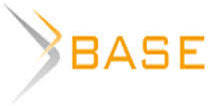INFORMATION ECONOMY OF BELARUS AND ANTHROPOGENOUS POTENTIAL OF ITS DEVELOPMENT
Abstract
The paper proposes a framework of research methodology of social capital, discusses various concepts of formation of social capital in relation to sustainable development of the country, the technique of the relationship of strong social capital of the Republic of Belarus and the formation of appropriate information infrastructure, including various communications lines, discusses various components of social capital of Belarus.
Keywords: Social capital, social structure, cultural development, sustainable development, education system, information, new technology, human development, communication
Introduction
In recent years, the concept of «social capital» has attracted increased attention of economists, sociologists, and theorists in many other social sciences. Social capital has been linked with such fundamental policy goals as social cohesion, resource management, and increased public participation in the political process. There has been particular interest of policy makers who see social capital as a tool for environmentally, socially and economically sustainable development. Related to this, there has been an upsurge of interest in the Republic of Belarus in the past several years, by local bodies and other groups, in more participatory forms of public decision-making. This has led to the use of more creative forms of information infrastructure. Social contacts established at school or university are important sources of practical skills and knowledge that can effectively supplement formal education. Stronger social capital, and Governments’ greater reliance on it, can make policies more effective. This article, therefore, examines the trends in the formation of social capital and explores options for increasing its amount Belarus.
Main part
Over the past few years in particular, the concept of “social capital” has attracted increasing attention of academics and policy makers internationally. It has been hailed as a critical link between the fields of economics, sociology and political science, signifying a re-acceptance that economic activity does not occur in a vacuum, but rather within a broader social and institutional environment.
Social capital is associated with a range of public policy goals, including social cohesion, reduced violence, increased sense of mutual obligation, and increased participation in democratic processes (Blakeley and Suggate, 2007) [6]. In the past decade, there has been a particular interest of policy makers who see social capital as a tool for poverty reduction and economic development.
Object of research: social capital as a basis of sustainable development of Belarus.
Purpose of research: analysis of determinants of strong social capital in Belarus as a basis of it economic and information development.
Methodology of investigation: the analysis and synthesis of scientific literature, comparison of different scientific views, opinions and research results.
Results of the research can be used in the state regulation sphere in determining priority directions of social and economic development of national economy.
According to the World Bank, “Increasing evidence shows that social cohesion – social capital – is critical for poverty alleviation and sustainable human and economic development ....”
This paper has three main aims: to present an overview of the concept of social capital, including an operational definition; to discuss the relationship between social capital, information infrastructure and sustainable development; to present the background, processes and practical lessons learnt from recent development of social information ifrastructure of Belarus.
The term social capital can be traced at least as far back as 1920, with the publication of Lyda Judson Hanifan’s The Community Centre (cited in Feldman and Assaf, 2009) [8]. The definition of social capital has since evolved through a series of conceptual frameworks. A sizeable literature has sprung up around social capital and related issues following the popularisation of the term by sociologist James Coleman in 2008, and the study of voluntary associations in Italy by Robert Putnam in the early 1990’s.
There is a variety of different ways to approach the definition of social capital. For instance, Coleman (2008) defines social capital as [1] obligations and expectations (e.g., of trustworthiness), [2] social norms (e.g., of cooperation and reciprocity) and [3] information channels (including communication during casual interaction). Another way of examining social capital is by considering parallels between the cognitive and structural dimensions of social capital (Table 1) [7; 10].
Table 1
The structural and cognitive dimensions of social capital
Таблица 1
Структурные и познавательные размеры социального капитала
Social capital is embodied in such complex and often unobservable phenomena as generalised trust, shared values, cooperative norms, formal and informal networks, stable and effective institutions, and social cohesion.
Civil social capital is the level of generalised trust, norms of cooperation and civic engagement in society (or within a specific community or region). Governmental social capital is the effectiveness of institutions (e.g. governance structures) in facilitating collective action. This is indicated by such features of society as the rule of law, political stability, and the effective protection of property and contract rights.
What unifies both types of social capital is that they each play a part in overcoming collective action problems. The link between civil society (e.g. community networks) and the institutional environment (e.g. local government) is critical to our understanding of social capital and the role of increased participation. There is evidence that high levels of civil social capital facilitate the establishment of more effective institutions (e.g. Fukuyama, 2005; Aron, 2008) [2; 10]. In turn, the political environment may encourage or discourage local organisation and participation (e.g. Grootaert, 2008), and provide a better or worse environment for civil social capital to develop.
Although much of the research cited in this paper is focused on the link between social capital and various aspects of economic performance (such as economic growth and poverty alleviation), there also appears to be a strong link between social capital and both environmental protection (e.g. managing in-shore fisheries) and social outcomes (e.g. community crime prevention). This is because of the fundamental role that social capital plays in aligning incentives to overcome a broad range of collective action problems. The existence of adequate levels of social capital within a particular collective (e.g. a neighbourhood, community or society) enables people within that group to coordinate their activities for mutual benefit, mitigating opportunistic behaviour.
The role of participation in public activities and decision-making is illustrated by Ostrom’s (2010) study of Nepalese irrigation systems [12]. Farmers throughout the world often face collective action problems when determining the allocation of costs and benefits associated with irrigation systems. Ostrom reports evidence from a study of 150 irrigation systems, which shows that many of the “primitive” stone-trees-and-mud headworks constructed by farmers significantly outperformed systems that had been improved through the construction of modern concrete and steel headworks (e.g. in terms of maintenance, equity of water delivery, and agricultural production). This appears to be largely because the “modern” irrigation systems were mostly funded from outside the local area and constructed by professional engineers, with no regard for pre-existing local management systems. A key finding was that “farmer-governed irrigation systems are able to achieve better and more equitable outcomes than those managed by a national agency”. One of Ostrom’s key policy conclusions was the followinf: “Instead of presuming that local users face an impossible social dilemma or collective-action problem, we are better advised that it is possible, even though difficult, for those facing severe collective-action problems to overcome them.
The greater the level and salience of the potential joint benefit and the existence of a supportive political system, the higher the probability that collective action will be undertaken.
Narayan and Pritchett (2010) provide another illustration of the link between social capital and sustainable development. Using household survey results from Tanzanian villages, Narayan and Pritchett find that their social capital index is associated with higher reported levels of parental participation in schools, and higher levels of school quality. Villages with more social capital were also more likely to have undertaken community road building activities, and to have adopted more modern agricultural practices [11].
Given that theory and evidence suggest a link between social capital and sustainable development, we return now to the question of how to invest in social capital.
Activities that build social capital must necessarily foster cooperation rather than conflict. Thus, they must reflect community norms, have a mandate from the community of interest, use a form of organisation that is appropriate, and enable the community’s expectations and obligations to be met. From the perspective of policy makers, this means a commitment to community development principles, including the active involvement of communities in defining issues and problems, and in designing and implementing decisions.
Such an approach facilitates the transfer of skills between people, develops self reliance in the community, builds organisational capacity and networks, ensures local ownership of projects and decisions, and utilises local resources to solve local problems.
The community development approach involves a decentralisation of control away from the “experts” and towards the community. Arnstein's (2015) seminal article on citizen participation in planning activities presents this idea succinctly by way of a ladder metaphor, with citizen “empowerment” moving from non-participation (manipulation, therapy), to degrees of tokenism (informing, consultation, placation), to degrees of citizen power (partnership, delegated power, citizen control). It should be emphasised that more participatory forms of decision-making are not only likely to foster social capital (e.g. through a greater level of political participation, and improved accountability of governing institutions), but are also likely to improve the quality of decisions through the utilisation of local knowledge [1].
Determinants of strong social capital include high levels of interpersonal trust and access to channels of communication. Interpersonal trust increases people’s readiness to interact and cooperate with one another. As stressed by Fukuyama, trust is “the expectation that arises within a community of regular, honest, and cooperative behaviour, based on commonly shared norms, on the part of other members of that community”. Access to channels of communication helps to broaden personal networks, while the media can promote social cohesion by creating a sense of belonging within citizens to the events and issues most relevant to the society at large.
Building social capital for Belarus
As suggested by the 2011 European Values Survey, the Belarusian society enjoys relatively high levels of interpersonal trust. The percentage of Belarusians polled who shared the view that most people could be trusted was 41.9%, as compared to the European average of 30.7%, 27.2% in Ukraine, 24.9% in Lithuania, 23.7% in Russia and 18.9% in Poland [13]. Recent data indicate that access to channels of communication and the media is also improving. This is true both of the ‘established’ channels, such as fixed-line telephones, radio and television, and also of the ‘new’ communication methods, such as the Internet and the mobile phone. On average, every Belarusian household has at least one television receiver.
From 2005 to 2011, the number of mobile phones per 100,000 population more than doubled and became comparable to the number of fixed telephone lines. Over the same time period, the number of Internet hosts grew by more than 60%. Access to channels of communication has expanded opportunities to receive an education and find employment. A growing number of educational establishments are benefiting from access to electronic libraries and research data bases. Many are offering distance education courses. The development of corporate networks has given more people the option of tele-commuting, or working for their employers over the Internet.
High levels of growing opportunities for citizens to interact with one another have strengthened and broadened cooperative ties within the Belarusian society. Such interaction and cooperation have helped offset the negative effects of income inequality, and the unequal opportunities that come with it.
Many people with low incomes are relying not only on state assistance, but also on support from their friends and families. In the year 2000, some 30% of Belarusian households were receiving money or help in-kind from friends or relatives. Such assistance represented a significant 3% of all household incomes [13]. Over 85% of Belarusians know someone who can provide them with temporary accommodation when they need it (Table 2).
Table 2
Social capital utilization, %
Таблица 2
Использование социального капитала, %
In addition to being an important part of the social safety net, social capital facilitates access to the knowledge and skills needed in the modern society. Interpersonal contacts promote the diffusion of computer technology. More than 80% of Belarusians already know someone who can work on a computer. Personal networks also increase social mobility. Some 45% of Belarusian citizens have personal contacts with public or private sector managers. Such relationships can significantly expand the choices of employment for many.
In sum, social capital is an important factor that broadens people’s choices for social and economic advancement. This benefit of social capital directly supports many of the Government ‘s social policy objectives.
However, in order for this advantage to be maintained, equal opportunities to build and utilize social capital are essential. Otherwise, rather than being a force for greater equity, it can also become a factor that perpetuates and deepens inequality.
Belarusian citizens are using social capital to gain knowledge, increase their social mobility and protect themselves from the risks and hardships of the transition period.However, the actual extent to which such benefits are gained depends on the opportunity to build and utilize social capital. Individual ability to build social capital can be constrained by limited access to channels of communication [3; 5]. Social exclusion and stigma can make some population groups less trusted than others. The narrow scope of social contacts limits an individual’s ability to gain knowledge or find employment. A national representative poll was commissioned by the UNDP project «Empowerment of Women in Belarus» in 2011, to identify the degree of inequality in the distribution and utilization of social capital by Belarusian citizens. The focus was on three main classes of benefits – knowledge, social mobility and influence, and social support. As suggested by the poll’s findings (see Table 2), the main sources of inequalities in social capital distribution and utilization are linked to the place of residence, social status and education.
Unequal levels of educational attainment and socioprofessional background can also limit the capacity of various population groups to build and utilize their social capital. These two factors of inequality are mutually reinforcing. Education broadens opportunities for networking with people from different backgrounds, while the lack of education narrows them.
As for people with secondary or upper secondary education, university graduates are 1.5 – 2 times more likely to be acquainted with a computer user and twice as likely to be in contact with a manager. Friendships established at universities explain part of this difference. Such friendships tend to be more common among people with similar education attainment levels than with different educational backgrounds.
Access to channels of communication is also correlated with education and social background. Most mobile phone users are private entrepreneurs, people who work and travel, and students. The extent of the Internet use is determined by age. The highest proportion of Internet users are between 20 and 30 years of age. In addition, men are more likely to use the Internet than women. In Minsk, the Internet is used by 41% of men and 28% of women (Table 3).
Table 3
Use of the Internet in Minsk (based opinion poll data), %
Таблица 3
Использование Интернета в Минске (базирующиеся данные об опросе общественного мнения), %
In general, although the foundation for the development of social capital does exist, significant proportions of the population are limited in their ability to build and utilize it to broaden their life choices. The uneven distribution of social capital and its benefits can limit the efficiency of the social policies in Belarus by exacerbating the inequalities in incomes and opportunities for social advancement [4].
Rural dwellers are at the greatest disadvantage in this respect. Development of the rural social infrastructure should broaden their opportunities to enjoy the benefits of social capital. Improving the rural communications sector and provision of computers and Internet connections to rural schools should be an essential components of rural development plans. Events and services such as job fairs, legal clinics, multi-service centres have great potential to improve the situation not only of rural dwellers, but also of the other vulnerable groups, including the poorly educated, unskilled workers, senior citizens and the unemployed. Many of these services can be delivered by civil society organisations in partnership with the Government.
Results and conclusions
In sum, social capital is an important factor that broadens people’s choices for social and economic advancement. This benefit of social capital directly supports many of the Government‘s social policy objectives. However, in order for this advantage to be maintained, equal opportunities to build and utilize social capital are essential. Otherwise, rather than being a force for greater equity, it can also become a factor that perpetuates and deepens information inequality. Over the last ten years, Belarus has been carrying out an economic course with a strong social emphasis. Along with the high GDP growth of more than 10% annually over the last few years, Belarus has protected its population from an extreme social gap. The Gini index for our country has been lower 0.3% over the last ten-year surveillance. With the lowest unemployment level in Eastern Europe of currently 1.5%, Belarus undertakes system-based and comprehensive measures to increase relevance of professionals with high and secondary education on a labour market, and to encourage more labour opportunities and larger demand for specific professions. Education and science are the key contributing elements of progressive economic and information development. Education is a top priority for Belarusian social and economic policy. Our annual public spending on education is about 7 % of GDP in 2014 – higher than in many well-developed countries. Belarus has ensured a free secondary education, preserved a free high education available to all people on the basis of competition. For years our national education system produces one of the top literacy levels in the world – 99.7 % among adults.
Being one of the highly developed industries of the Belarusian economy, science and science-related services have great potential in transformation of social capital into intellectual potential. It is believed that Belarus could accelerate its progress towards sustainable economic development, preserve the unique features of its socially oriented economic system and respond to the challenges of informatization.

















Reference lists
Pp. 105-109.